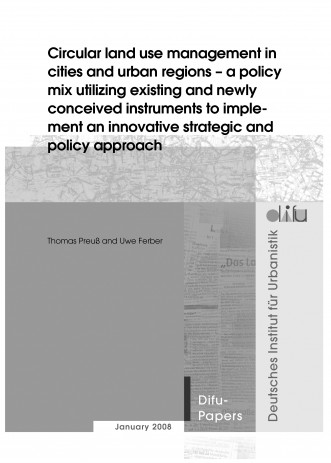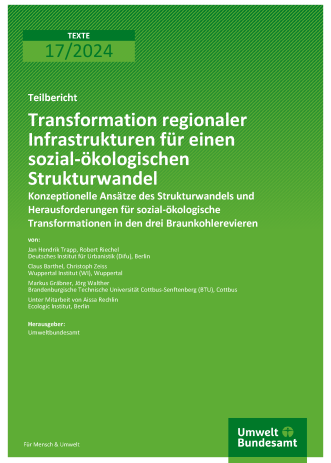Circular land use management in cities and urban regions - a policy mix utilizing existing and newly conceived instruments to implement an innovative strategic and policy approach

Difu Papers, 2008, 3 figures, 1 table, 2 overviews, englisch, 20 S., Deutsches Institut für Urbanistik 2008
Kostenfreier Download
Inhalt
The German government’s National Strategy for Sustainable Development aims at reducing land utilization from the 100 ha per day currently used today to 30 ha a day and at realizing three times as much internal development as external development by the year 2020. Circular land use management is a key policy and strategic approach for implementing the two-pronged strategy of quantity and quality management necessary to achieve these objectives. Circular land use management primarily focuses on systematically exploiting the potentials of existing structures and reusing derelict land. It allows for zoning of new land for development on a small-scale under certain conditions. Consequently, this strategy endeavours to diminish new development in “green belts” and to activate previously developed building land. Realizing a Circular land use management policy requires employment of a policy mix which pools existing and new instruments in the fields planning, information, organization and cooperation, funding and budgeting, marketing and dispositions. New instruments which provide goal-oriented incentives capable of effectively influencing current land use and zoning practices are necessary because existing instruments have limited potential with regards to achieving these aims. The German government and other important groups of stakeholders – the Länder, public stakeholders at the municipal and regional levels, private enterprise, institutions which own land, the real estate industry and private households and small-scale property owners – should cooperate closely to establish appropriate framework conditions for Circular land use management.

